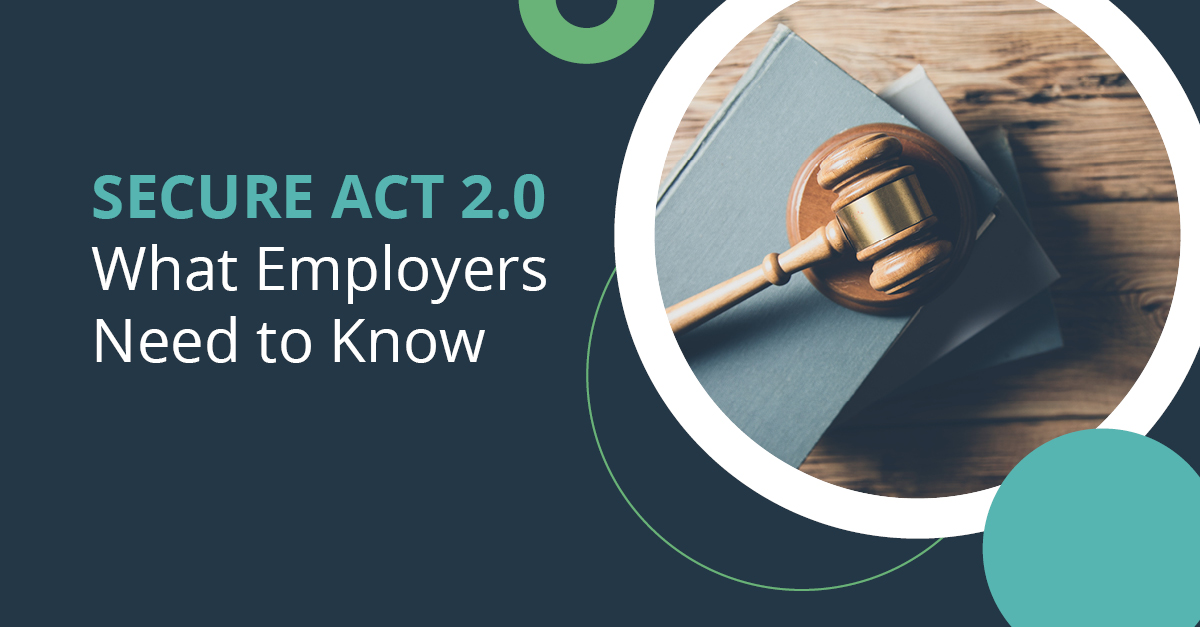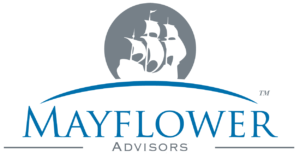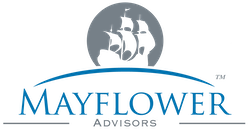
After a lot of excitement, Congress finally passed the Consolidated Appropriations Act which included several new retirement plan legislations. The SECURE 2.0 and other provisions strive to expand access to retirement plans, increase retirement savings, help American’s preserve income and streamline retirement plan rules.
With over 92 different retirement plan provisions, we want to make it easier for employers, fiduciaries and administrators to digest. In this summary, we focus on the most common sections that are most applicable in your leadership position. Let’s work together to secure a bright future.
Effective immediately | 2023
Roth Employer Contributions
Employers may now choose to offer matching or nonelective contributions as Roth contributions.
Small Incentives for Contributing to a Plan
Applaud good savings behavior by offering small rewards to employees who participate in a 401(k) or 403(b) plan. In the retirement industry, this is casually referred to as the “gift card” section.
Tax Credits
For new retirement plans, companies with less than 50 employees can claim up to 100% of the start-up administration costs (max $5,000). And for the employees who make less than $100,000, employers can claim an additional $1,000 per person, in which employers could apply the credit toward a matching contribution (max $50,000).
Available in 1 Year | Effective Date 2024
Roth-Required Catch-Up Contributions
For participants over age 50 looking to max out retirement savings through catch-up contributions, if the employee earns more than $145,000, then those contributions are required to be Roth contributions. If the employee earns less than $145,000, they can choose either pre-tax or Roth contribution type. Reminder: Plans need to allow for Roth contributions in order for this to be available.
RMDs Not Required for Roth 401(k) and 403(b) Accounts
Retirement plan savings in a designated Roth 401(k) and 403(b) accounts are no longer subject to RMD rules. This means employees’ account can continue growing tax-free.
Emergency Withdrawals
An employee may claim a personal emergency and access up to $1,000 from their retirement plan. They can take one distribution per year and have the option to repay it within three years. If repaid and they have another personal emergency expense, they can take another distribution. If not repaid within three years, they cannot take another distribution.
Matching Student Loans
For employees who are paying down student loans, employers will be able to apply the retirement plan’s matching formula to that repayment amount and deposit the match into the workplace retirement savings plan. This helps the employees save for retirement while getting out of debt.
Force-Out Rollover Limit
Under current law, employers may transfer former employees’ retirement accounts from a workplace retirement plan into an IRA if their balances are between $1,000 and $5,000. This section increases the upper limit from $5,000 to $7,000.
Automatic Portability
This provision makes it easier to move retirement accounts from a former employer to the new employer. By allowing for automatic portability, it helps to reduce future missing participant issues, supports employers with clean participant data and helps employees by consolidating retirement savings accounts.
“Side Car” Emergency Savings Account
New payroll deduction account that is for short-term emergencies. Non-highly compensated workers could be automatically enrolled at 3% and can save up to $2,500 in this Roth account. They can access the account tax- and penalty-free.
Available in 2 Years | Effective Date 2025
Improving Retirement Plan Access for Part-Time Workers
Long-term, part-time employees who meet the eligibility requirements will be allowed to save through the company’s retirement plan. For part-time employees, it is important to have a good time tracking system in place because eligibility rules are retroactive. The stated eligibility rules are for employees who work for two consecutives 12 month periods during each of which they have at least 500 hours of service. Employers are not required to match contributions. Effective January 1, 2025.
Automatic Enrollment and Escalation| Retirement Savings on Autopilot
For all new 401(k) and 403(b) plans, they are required to automatically enroll participants and auto-escalate savings. The employer will set the introductory deferral amount between 3 – 10% and the deferral amount increases by 1% up to 10 – 15% retirement savings per year.
Higher Catch-Ups for 60 – 63 years Old Employees
Employees between the 60 – 63 years old who are looking to maximize retirement savings will be allowed to increase their catch-up contribution to $10,000 in 401(k), 403(b) and governmental plans. For individuals who make more than $145,000, the catch-up must be a Roth contribution.
Available in 4 Years | Effective Date 2027
Enhance and Promote Savers Match
As part of the mission of SECURE 2.0 Act, the Savers Match sections are to increase access to savings opportunities and to increase retirement savings. The Savers Match is designed to help low-to-moderate income workers save more for retirement through a Treasury matching program. To qualify for the match, employees must be 18 years or older and make up to $41,000 but not more than $71,000. Treasury to match 50% of their retirement plan contribution up to $2000. Stated another way the Treasury will put $1000 in “free” money into that participant’s account. Effective 2027.
The original program, called the Saver’s Credit, is available now. For more information, visit IRS’ website.
Other Important Sections
Here are a few additional sections that we did not call out in detail but are important, especially if you are thinking about adjusting your retirement plan in the future.
Age Increases for Requirement Minimum Distributions – Individuals can wait until age 73 (previously 72) to take a mandatory retirement savings withdrawal. Starting 2033, the RMD age is increased to 75 years old. Effective immediately.
Military Spouses – Employers can claim up to a $500 retirement plan tax credit if they allow employees who are spouses of uniformed services to save through the company’s retirement plan. Effective immediately.
Starter 401(k) Plans – If an employer does not offer a retirement plan, there is a new barebones option. The plan only allows employee deferrals. Eligible employees are auto-enrolled and the maximum savings amount is $6,000. This is similar to State IRA plans. Effective 2024.
Required Minimum Distribution Excise Tax Reduction – Missing an RMD can cost older people greatly. New provisions reduce this pricey penalty from 50% to 25% and if the failure is corrected in a timely manner, the penalty is reduced to 10%. Effective immediately.
Retirement Lost and Found – A new national online searchable database to locate retirement accounts. Effective 2024-ish.
Expand Self-Correction Program – Allows for easier plan corrections of loans through the Employee Plans Compliance Resolution System (“EPCRS”). Effective immediately.
Self-Certify for Hardship Distribution – Employees may self-certify they are going through a hardship and need access to their retirement funds. Effective immediately.
Penalty-Free Withdrawals for Victims of Domestic Abuse – Domestic abuse survivors may withdraw the lesser of $10,000 or 50% of their retirement account. Effective 2024.
Penalty-Free Withdrawals for Terminal Illness – Terminally ill individuals may withdraw retirement funds without being subject to the 10% early distribution tax penalty. Effective immediately.
Penalty-Free Withdrawals for Federally Declared Disasters – Permanent rules go into effect that allow up to $22,000 to be distributed from a retirement plan or IRA for affected individuals and are not subject to the 10% early distribution tax penalty. Retroactively effective to January 26, 2021.
Cash Balance Calculations – New rules clarify and cap the maximum interest rate at 6%, which will provide larger pay credits for older, longer service workers. Effective immediately.
We hope that you found this high-level summary helpful. As always, we are here to be a resource to you and are available to discuss your retirement plan details in more depth.
This information is not all encompassing. Please consult our team, legal council and retirement plan service providers for more specific information. Or, click to read the 19-page Summary from the Senate Finance Committee about the SECURE Act 2.0 and other retirement plan provisions.

265 Franklin Street 4th floor
Boston, MA 02109
(617) 259-1767
This information was developed as a general guide to educate plan sponsors and is not intended as authoritative guidance or tax/legal advice. Each plan has unique requirements, and you should consult your attorney or tax advisor for guidance on your specific situation. Securities offered by Registered Representatives through Private Client Services, Member FINRA/SIPC. Advisory products and services offered by investment advisor representatives through Mayflower Advisors, a registered investment advisor. Private Client Services and Mayflower Advisors are unaffiliated entities
This information was developed as a general guide to educate plan sponsors and is not intended as authoritative guidance or tax/legal advice. Each plan has unique requirements and you should consult your attorney or tax advisor for guidance on your specific situation.
